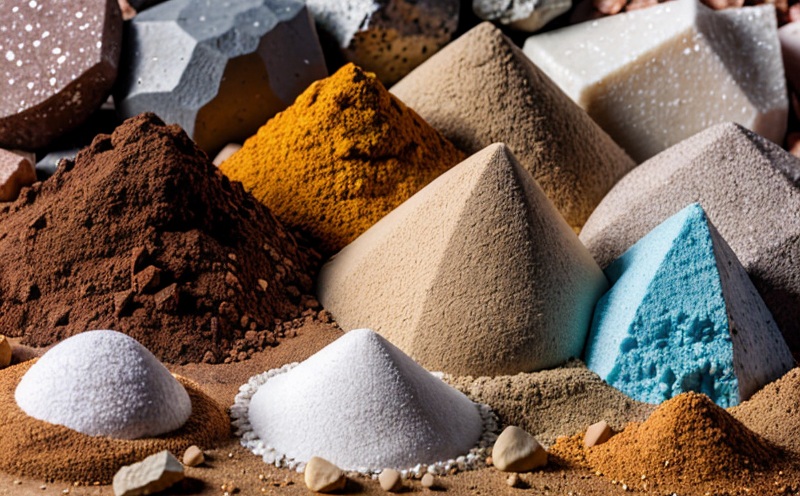ASTM E1019 Carbon and Sulfur Analysis in Ores Testing
The ASTM E1019 test method is a critical standard for the precise determination of carbon (C) and sulfur (S) contents in ores. This method is widely used in mining, metallurgy, and environmental sectors to ensure the quality control and compliance with international standards. The accuracy and precision of this analysis are paramount as they influence downstream processes such as smelting, alloying, and waste management.
The ASTM E1019 procedure involves the combustion of a known mass of ore sample in an oxygen-rich environment to produce carbon dioxide (CO2) from the carbon content and sulfur dioxide (SO2) from the sulfur content. The gases are then collected, converted back into their respective elements, and weighed accurately using gravimetric techniques.
The standard specifies a range of specimen preparation steps that include drying, crushing, and sieving to ensure uniformity across samples. This ensures consistent results and minimizes errors due to particle size or moisture content variations. The method also allows for the determination of both total carbon (TC) and total sulfur (TS), which are crucial in assessing the elemental composition and potential reactivity of ores.
The ASTM E1019 procedure is highly sensitive, capable of detecting very low concentrations of carbon and sulfur down to parts per million levels. This sensitivity makes it particularly valuable for high-quality control applications where even minor variations can significantly impact product performance or regulatory compliance.
Compliance with this standard ensures that the ore samples meet specific purity requirements set by industry standards and regulations, which is essential for maintaining consistent product quality across different batches and locations. This consistency is vital in industries reliant on precise material composition to ensure efficient processes and minimize waste.
Scope and Methodology
The ASTM E1019 standard outlines a comprehensive approach for the quantitative analysis of carbon and sulfur in ores. The scope includes detailed procedures for specimen preparation, combustion conditions, gas collection, conversion back to elements, and final gravimetric determination.
Specimen preparation is critical as it involves drying the ore sample at 105°C ± 2°C until constant weight is achieved. This step ensures that any moisture content does not interfere with subsequent combustion processes. Once dried, the sample must be crushed to pass through a specific mesh size (typically 2 mm), and sieved further if necessary.
Combustion takes place in an oxygen-rich environment at temperatures around 900°C ± 15°C under controlled conditions to ensure complete combustion. This temperature range is crucial as it balances the need for thorough oxidation without causing excessive loss of volatile components that could skew results.
The collected gases are then converted back into their elemental forms using standard laboratory techniques and weighed accurately on a precision balance. The results from these weighings provide direct measurements of carbon dioxide (CO2) and sulfur dioxide (SO2), which correspond to the total carbon (TC) and total sulfur (TS) contents, respectively.
The ASTM E1019 method also specifies acceptance criteria for both the combustion process and final results. These criteria ensure that any test must meet stringent accuracy and precision standards defined by the standard. Compliance with these criteria guarantees reliable data suitable for making informed decisions regarding ore quality and subsequent processing steps.
Benefits
- Precision in Elemental Composition Analysis: ASTM E1019 ensures accurate determination of carbon and sulfur contents, providing reliable data for quality control.
- Regulatory Compliance: Results from this method meet international standards, ensuring compliance with environmental regulations.
- Informed Decision-Making: Accurate elemental composition allows informed decisions regarding ore processing methods and alloying processes.
- Minimized Waste: By identifying impurities early in the process, this method helps reduce waste during refining and smelting operations.
- Predictive Maintenance: Understanding elemental composition aids in predicting potential issues related to corrosion or reactivity in industrial processes.





